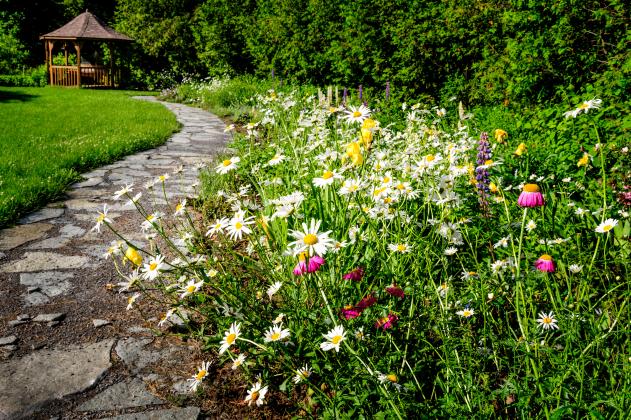Rachael Brooke - Phillips-Rooks District Extension Agent, Agriculture and Natural Resources
Native grasses and many native wildflowers do well within a wide pH range. Any pH between 5.5 and 8 should work. Just make sure the area receives at least 8 hours of sun a day.
It is better to choose a blend of grasses and wildflowers rather than a single species. Companies that provide regional blends include Sharp Brothers, Stock Seed and Wildseed Farms.
These plants do not take root and grow well in areas that already have established plants. Existing vegetation should be killed before seeding. Use the following steps to increase the chances of success. Control perennial weeds by using a product containing glyphosate. Using glyphosate, the fall before planting makes soil preparation easier the following spring. Adjust pH and fertilize according to the soil test before planting. The seedbed should be firm (you can use a roller or drive over the area with a riding lawn mower) so that a boot heel sinks no more than ½ inch. The goal is good seed to soil contact. Seed can be mixed with damp sand (4:1 sand/seed) for more uniform coverage with a drop seeder or whirlybird spreader. The seed should be raked in about ¼” deep. Don’t mulch. Keep the seed moist while the seed is germinating (watering 3 to 4 times per week, if possible). Slowly back off watering as plants develop.
What about planting dates? Warm-season grasses and most prairie flowers should be seeded between April 1 and May 15. To control any remaining living vegetation, spray with a product containing glyphosate, wait a week and plant. Make sure the soil temperature is at least 60 degrees before planting.
Weeds can be pulled but be careful and avoid uprooting small prairie flowers. Mowing as high as possible can help control fast growing weeds while preserving most of the foliage on the prairie flower.
For more information, please contact the local K-State Research and Extension Office.
K-State Research and Extension is an equal opportunity provider and employer.

